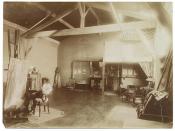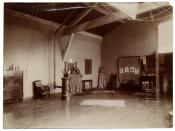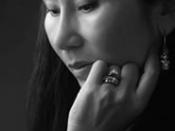The relationship between the author has his readership has always been a contentious one. Authors are often accused of writing just to please the popular book market so as to raise their book sales, and readers are often accused (by literary critics and authors alike) of being uninformed, and hence unappreciative (and in dire need of literary and cultural education) audiences of a critical, but less popular text. The charges of crowd-pleasing writing are even more severely ladled out to Asian American writers such as Amy Tan, whose popularity has put her under intense scrutiny by the critics.
Sau-Ling Cynthia Wong's critique of Amy Tan's The Joy Luck Club is one such charge. In her essay "Sugar Sisterhood"ÃÂ: Situating the Amy Tan Phenomenon, Cynthia Wong accuses Amy Tan of writing to satisfy the needs and desires of her intended audience. She holds the view that Tan writes to please a white readership which is "naÃÂïve and voyeuristic"à"àso eager to read and learn all about China as told by a supposedly trusted guide that they miss out or ignore the historical and anthropological errors that litter Tan's book.
She claims that Tan "invites trust"ÃÂ from her readers as a knowledgeable guide of the Chinese culture, and when this trust is obtained, proceeds to betray it with what Shirley Geok-Lin Lim calls this "easy exoticism"ÃÂ "ÃÂ a tendency to fake her depiction of China. Cynthia Wong gives numerous examples of where Tan gives "highly dubious or downright erroneous details"ÃÂ of China, such as Tan's unnecessary anglicized (and sometimes "unidiomatic"ÃÂ ) version of Chinese phrases when the translated English version will suffice; Tan's mixing up of the various Chinese festivals, and other such instances. Wong seems to be justifiably annoyed at Tan's inaccuracy because critics have lauded Tan's book for her accurate portrayal of Chinese culture.
However, despite all this, there seems to be a begrudging sense of admiration for Amy Tan's manipulation of her book market "ÃÂ that Tan has recognized what the reader wants, and has given it to them at the correct time. She writes that Tan's book is situated "at the confluence of a large number of discursive traditions, each carrying its own history as well as ideological and formal demands"ÃÂ. Tan has managed to write at once a book that includes "matrilineal feminist discourse"ÃÂ for the white feminist reader, and enough of Chinese culture to pacify the culturally voyeuristic reader.
For the white feminist reader, she writes of the intergenerational and intercultural gap that exists between mother and daughter, and these familiar, almost universal tropes endear her to the hearts of the white female reader, as well as the Asian American female reader. White female readers identify with Tan's portrayal of mutual mother-daughter misunderstandings, and the Asian American female reader identifies with her portrayal of the cultural gap that exists between first-generation and second-generation Chinese living in America. Feminists love her portrayal of the rise of the individual woman (such as Woo Suyuan's lone trek toward Chungking), and her depiction of the tyrannical Chinese male in China.
This also has the effect of capturing the pro-America reader. Tan writes China in such a way that it can be read as a bad place to be, compared to America's liberal way of life. The fact that all the characters in her book leave China's hardship for America's prosperity is not lost on these readers, as they then read it as Tan commenting on the sure economic success lying in America. (However, Tan does conspicuously leave out the details of how her characters moved up the economic ladder after they arrive, a point in which some critics have mentioned. (Not to mention lecturers like the good Dr. Walter Lim and Dr. Jeff Partridge in the great learning institution of NUS) ) The culturally voyeuristic reader is not left out, according to Cynthia Wong. She claims that Amy Tan does not accurately depict China and the Chinese traditions, be it in America or in China. Instead, Tan simply leaves "Markers of Authenticity"ÃÂ , signs that signify that she is writing about China, and then proceeds to pen never-before heard of sayings, such as "(a woman's) worth is measured by the loudness of her husband's belch"ÃÂ. This is what Cynthia Wong means when she notes that Tan "invites trust"ÃÂ from her readers as a knowledgeable guide of the Chinese culture. The daughters in the book stand in for the mainstream reader, and their initial alienation, and consequent discovery of the Chinese culture passed on by their mothers is a journey of discovery in which these readers are fellow passengers.
Hence Cynthia Wong feels that Amy Tan panders too much to the book market, sacrificing authenticity in her portrayal of Chinese traditions and China for writing fiction. However, one wonders if Cynthia Wong is placing too much blame or according too much credit to Amy Tan for fooling her audience. Amy Tan never claimed to be writing a historically accurate portrayal of China; neither did she state that she would not sacrifice cultural integrity for the purposes of reaching the wider popular market. In fact, Tan wrote, "I later decided I should envision a reader for the stories I would write. And the reader I decided upon was my mother, because these were stories about mothers."ÃÂ The burden of truthfulness and depiction should not rest solely on the shoulders of the author. The audience should have some part to play in the interpretive process.
Shirley Geok-Lin Lim's article "Reconstructing Asian-American Poetry: A Case For Ethnopoetics"ÃÂ shifts the onus from the author onto the audience to find out more about the literary traditions of the literature that they read. She calls for a shift from passive and ignorant readership, to one that is active and informed. She also questions the privileging of European literary works over non-European works in the light of "residual identity"ÃÂ that can be found in Asian American Literature. She radically suggests three solutions to the problem: that audiences should have "a specific sensibility trained to understand and appreciate the surface stylistic features of folkloristic and local effects; a linguistic knowledge of the original language of the poet necessary to apprehend the author's intentions; and an informed socio-cultural approach which counteracts the privileging of the dominant culture."ÃÂ However, despite her claim that her call for a readership that actively educates itself is not ideological "ÃÂ it is. To expect casual readers to voluntarily re-educate themselves for a paradigm shift "ÃÂ away from the dominant mindset of privileging European-based literary effects over other cultural works "ÃÂ is a little too much to expect. Couple this with her suggestion that readers learn a different language every time they pick up an ethnic writer's book, and you get an impossible solution.
I find that both Cynthia Wong and Shirley Lim cast interesting light on the relationship between an author and his audience, but the problems and solutions in which they bring up are highly impractical. The author's task is never perfect, and cannot be perfect. Can there truly be a perfect way of writing "ÃÂ giving the audience what they want, and not compromise on a cultural artist's integrity to be true to one's culture? Rarely, if possible. The opposite is equally impossible "ÃÂ Shirley Lim's suggestion that the audience, be it the critical audience or the casual audience, re-educate themselves whenever they read an ethnically loaded text. Unfortunately for Cynthia Wong and Shirley Lim, authors are sometimes ethically untrue, and audiences are stubbornly ignorant. Education for either is futile "ÃÂ writers will continue to feed themselves by writing what their book market wants to read, and readers will continue to be misguided and ignorant blind men.
Bibliography: 1) Shirley Geok-lin Lim, "Reconstructing Asian-American Poetry: A Case For Ethnopoetics"ÃÂ MELUS Volume 14 No. 2 (Summer 1987) 51-63.
2) Amy Tan,"Mother Tongue"ÃÂ Asian American Literature ed. Shawn Wong, New York: Addison-Wesley Longman 1996.
3) Amy Tan, The Joy Luck Club, Great Britain :Minerva, 1989 4) Sau-Lin Cynthia Wong " "Sugar Sisterhood"ÃÂ- Situating The Amy Tan Phenomenon"ÃÂ The Ethnic Canon: Histories, Institutions, and Interventions Ed David Palumbo-Liu, Minneapolis: University of Minnesota Press, 1995, 174-210.





